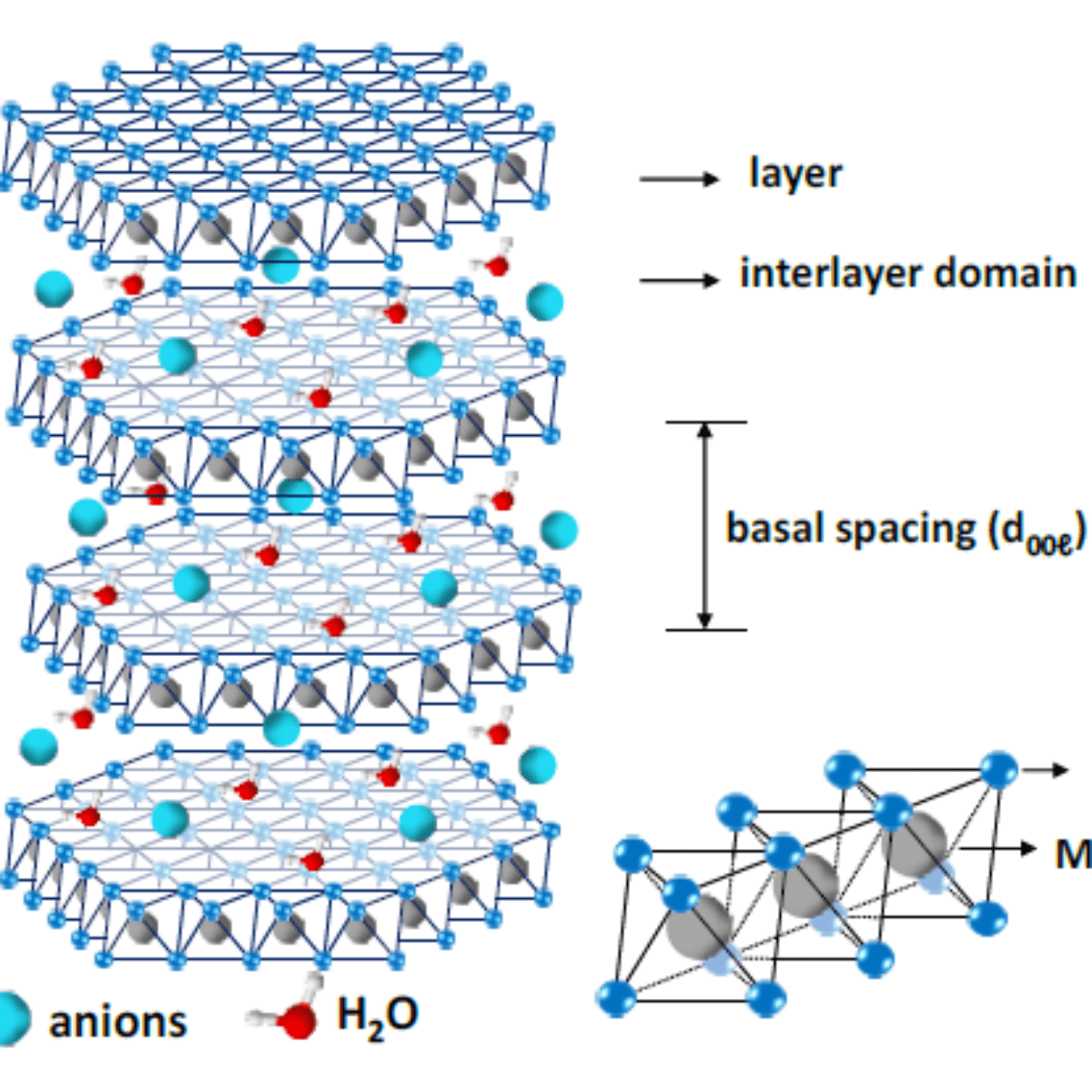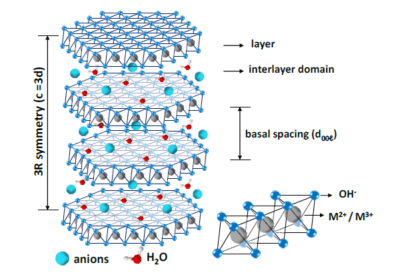
Research uncovers the mechanism of memory effect of lamellar double hydroxides (LDH).
Synthetic dyes are in constant use in a wide variety of industries, from textile to cosmetics. Both the production and use of these substances can lead to environmental problems if they are not properly degraded or removed from industrial effluents. Among the many physical, chemical or biological processes that can be used for the treatment of such wastes, the adsorption processes are noteworthy for combining low cost and high removal rates.

Figure 1: Schematic structure of the LDH.
R. M. M. Santos et al. [1] used the LNLS facilities to investigate the properties of lamellar double hydroxides (LDH), a family of anionic clays with high adsorption capacity, for the removal of synthetic dyes.
First, the group investigated the thermal decomposition of the lamellar double hydroxide $ZnAl-CO_3-LDH$, forming a mixed oxide. Next, the regeneration of the LDH structure was studied after contact of the mixed oxide with water or a solution containing the textile dye Acid Blue 113 (AB). This LDH regeneration property is known as the memory effect.
The researchers performed Wide Angle X-ray Scattering (WAXS) experiments on the LNLS SAXS1 beamline to evaluate modifications in the structure of the material.
In the study of thermal decomposition, the WAXS technique showed the structural destabilization of LDH with increasing temperature, through the events of water loss, dehydroxylation and decomposition of the anion, until the collapse of the lamellar structure and formation of an amorphous mixed oxide.
In the study of the regeneration of the lamellar structure of the LDH, the results obtained by WAXS contributed to the understanding of the effects of adsorption of bulky dye anions during regeneration and in the discussion of mechanisms related to the memory effect.
According to the researchers, together with those obtained by transmission electron microscopy (TEM) and X-ray absorption spectroscopy (XAS, performed at the French Synchrotron Light Source SOLEIL), these results were decisive in understanding the memory effect of the LDH. Moreover, the results contribute to explain several papers in the literature, most of which either neglect this effect or invoke certain mechanisms without appropriate experimental evidence.
Source: [1] R. M. M. Santos, J. Tronto, V. Briois and C. V. Santilli, Thermal decomposition and recovery properties of ZnAl-CO3 layered double hydroxide for anionic dye adsorption: Insight of the aggregative nucleation and growth mechanism of LDH memory effect, J. Mater. Chem. A, 2017, DOI: 10.1039/C7TA00834A.
Research analyzes the effect of nanoparticles formed during the preparation of Li-RHC with addition of $\rm TiO_2$
Encapsulation and addition of excipients were demonstrated to be promising